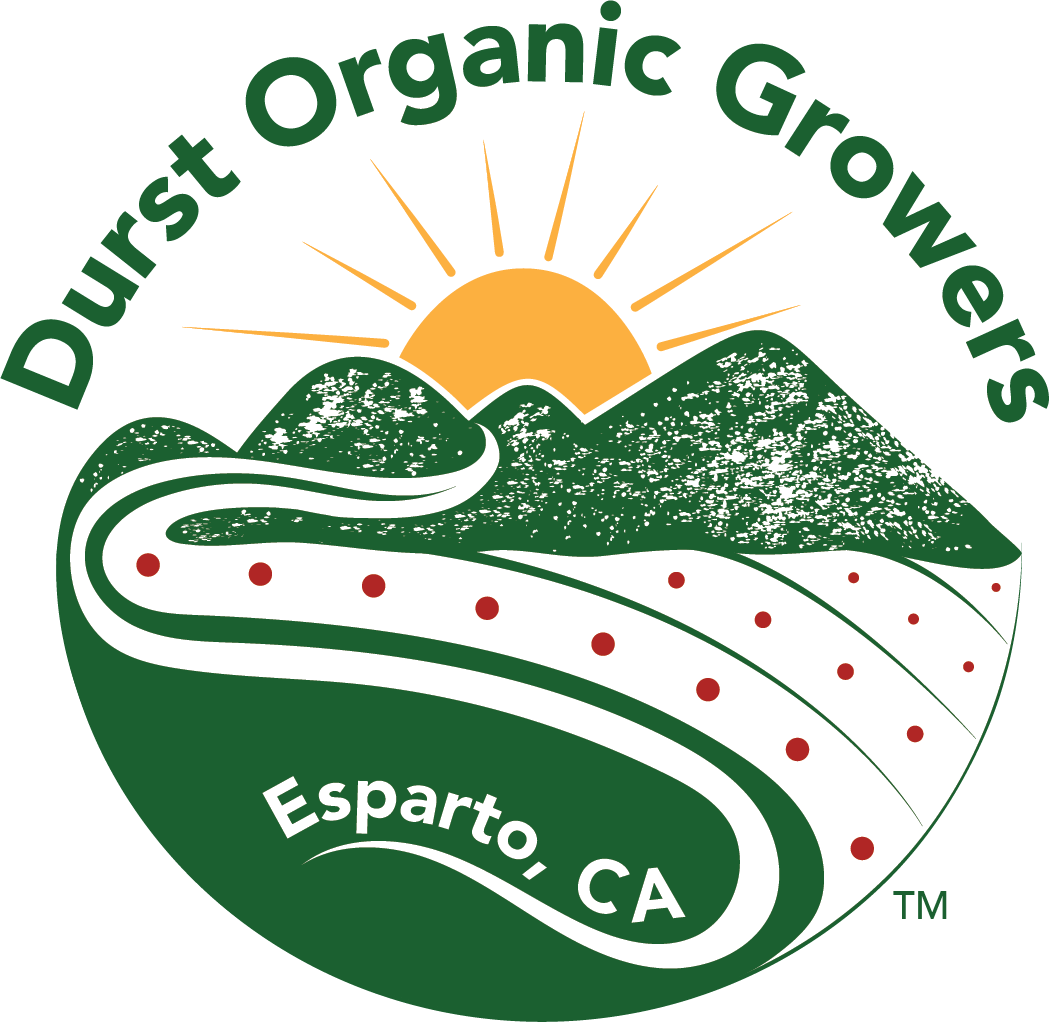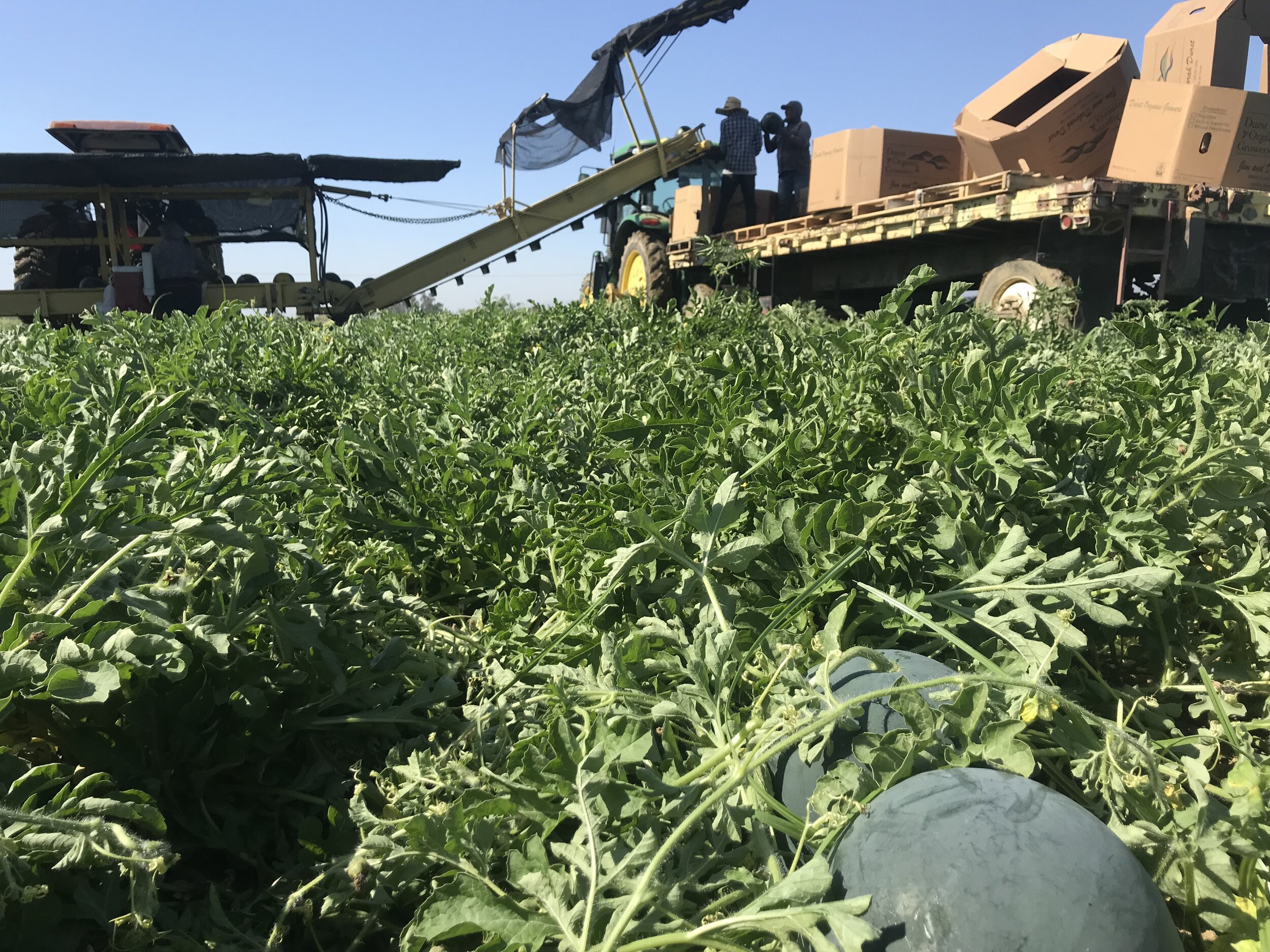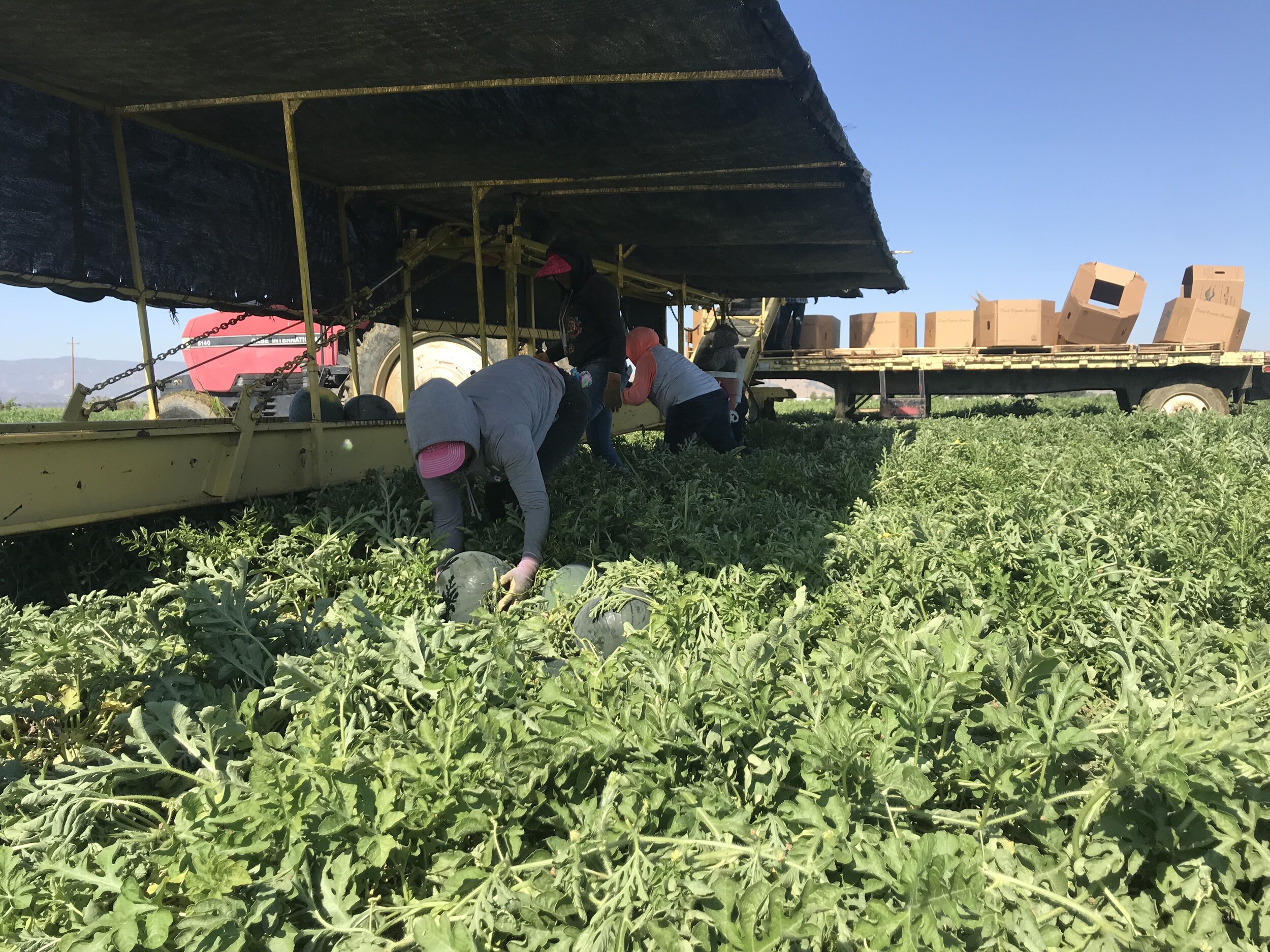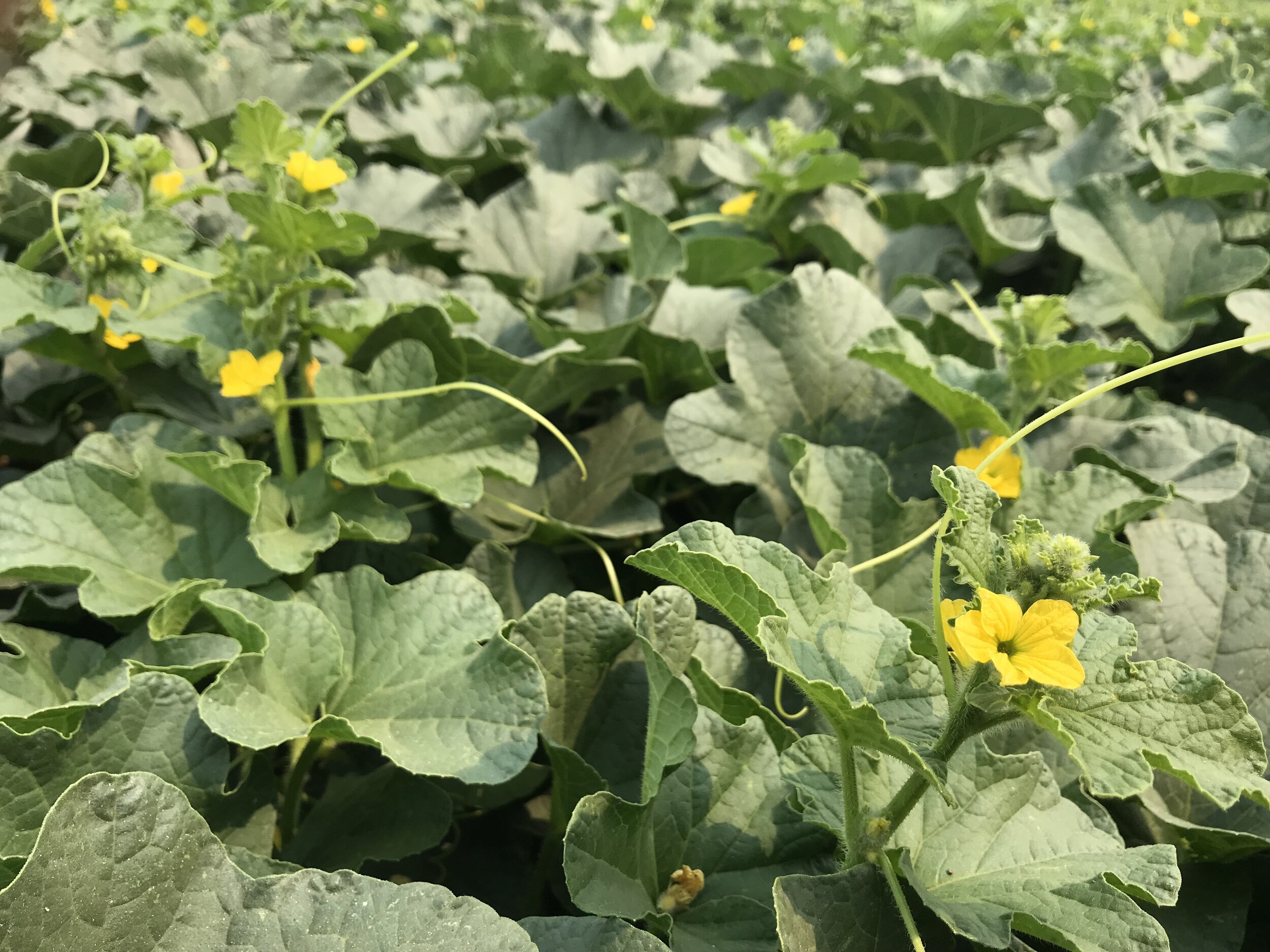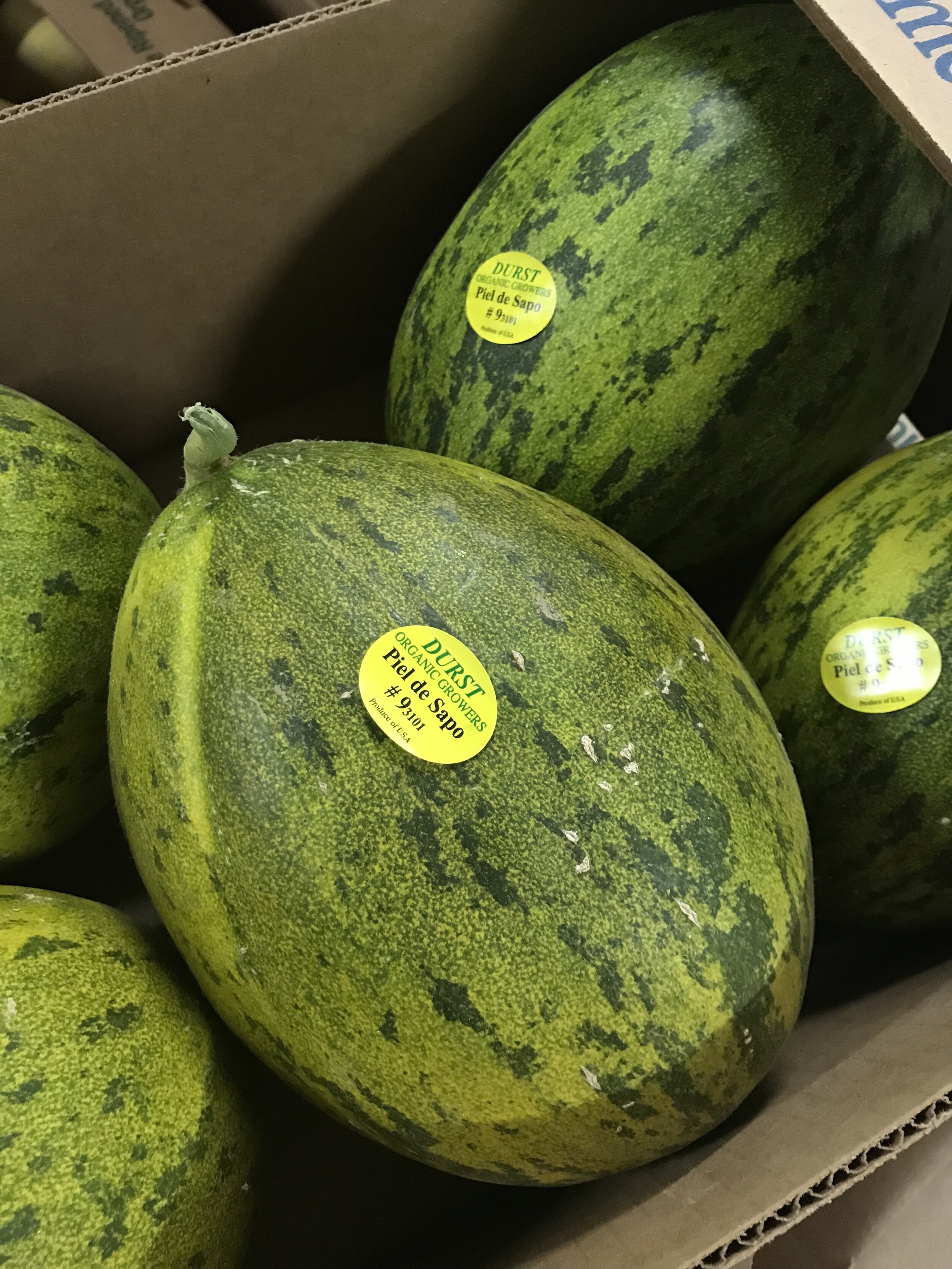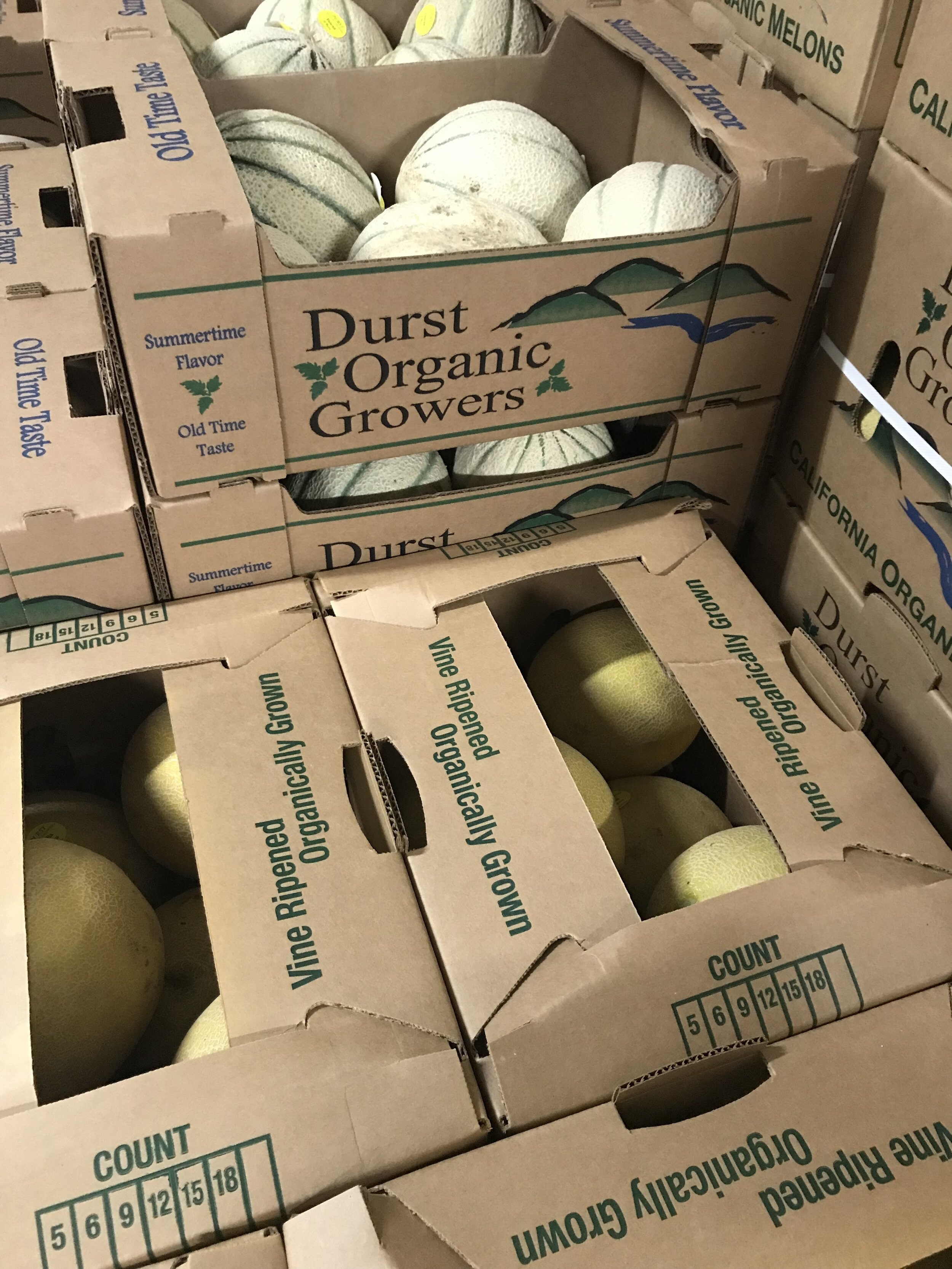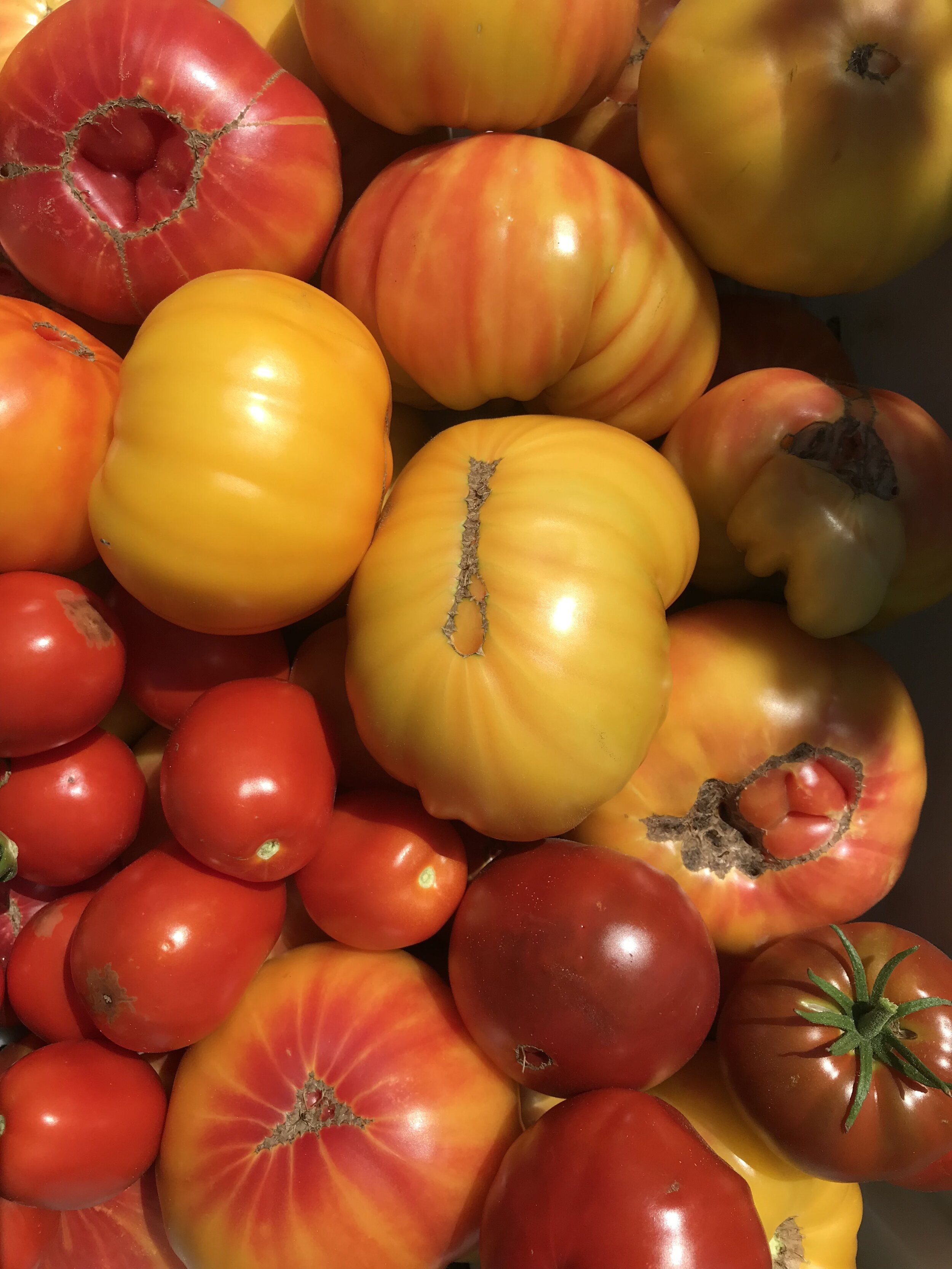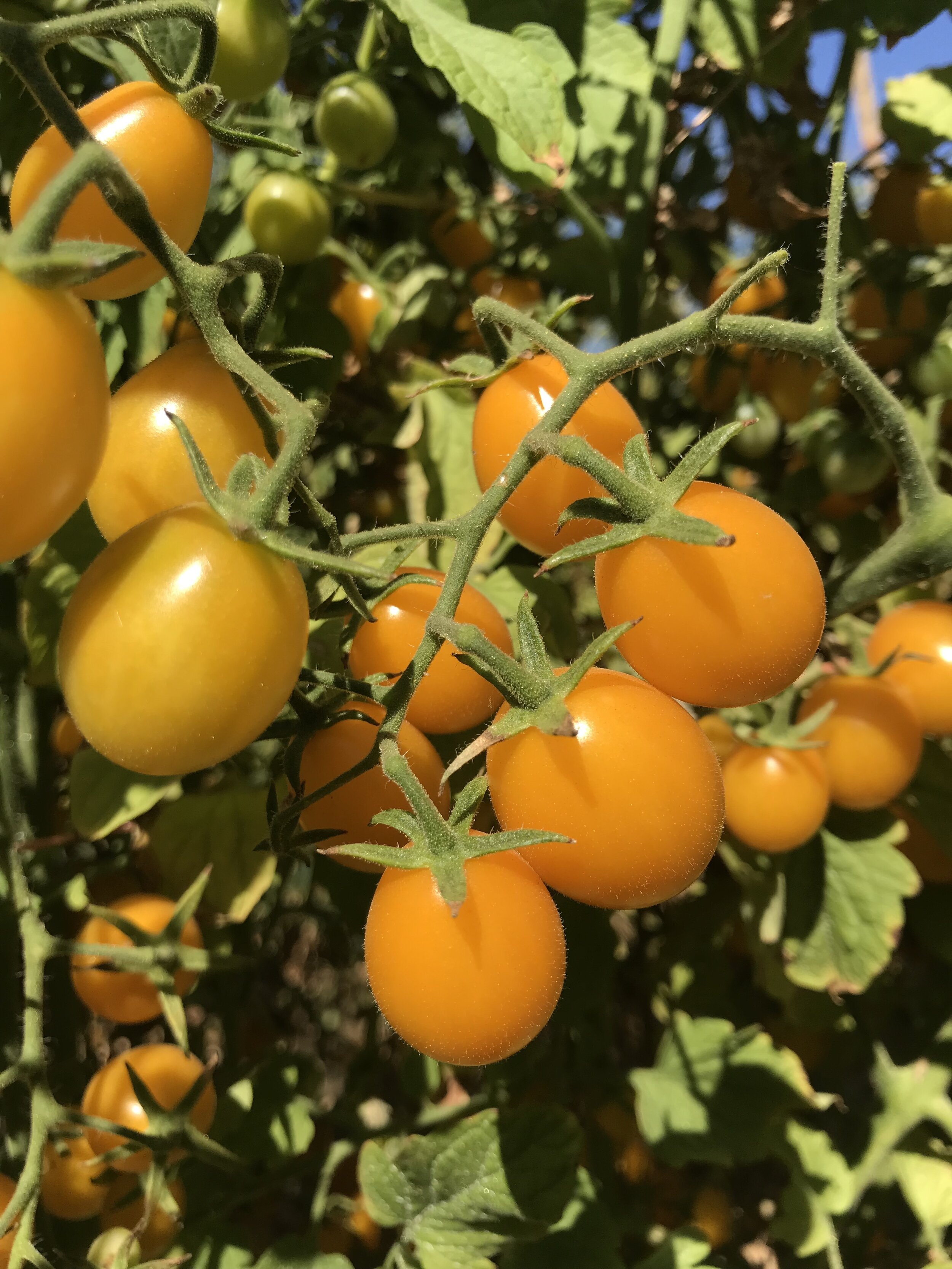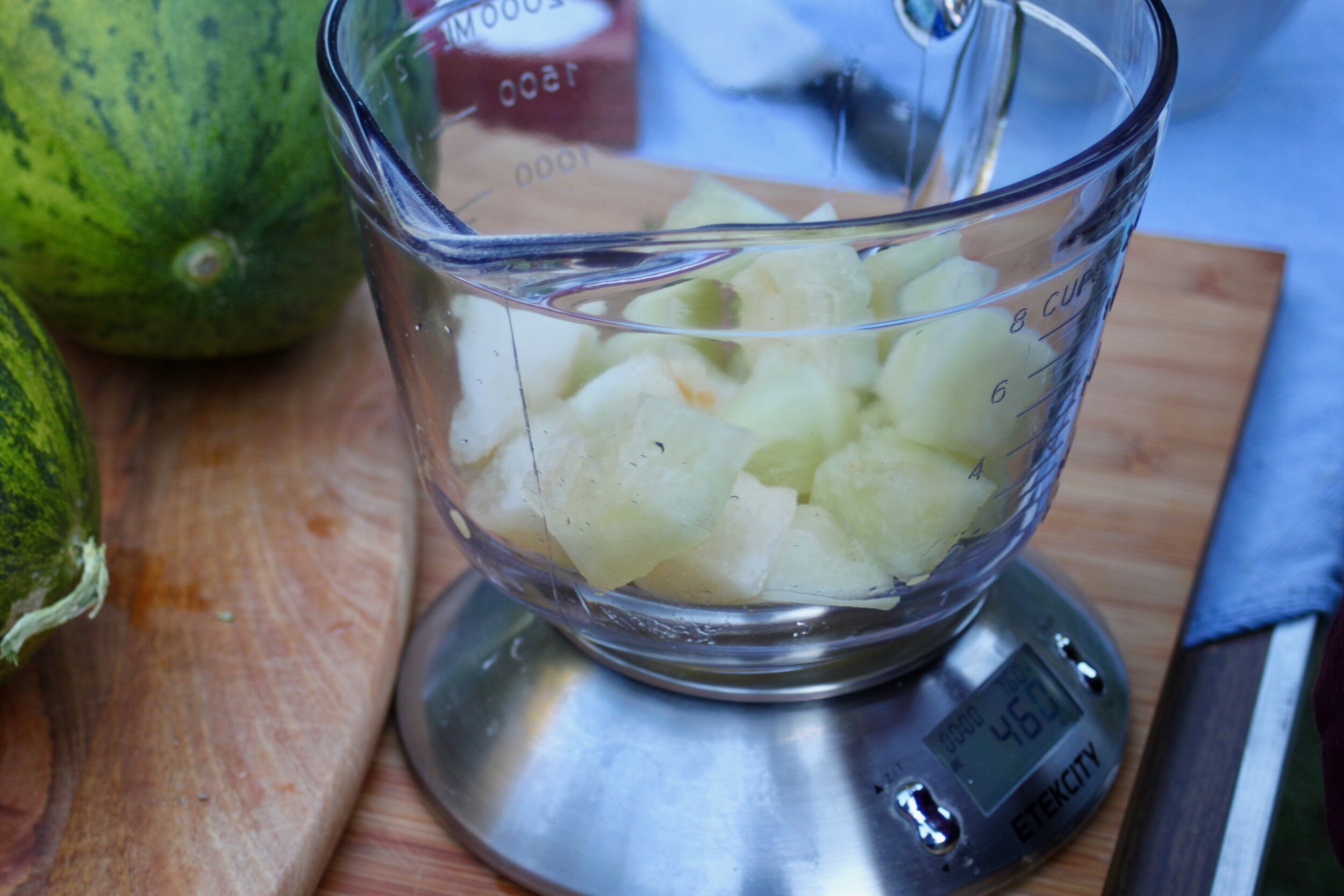Hungry Hollow Happenings: The Dog Days of Summer
This newsletter was delivered to inboxes on 08/24/21. If you like what you read, and want future newsletters delivered straight to your inbox, subscribe here: Hungry Hollow Happenings Subscription
We’re in the "dog days" of summer.
Which, for us, means a bounty of tomatoes, watermelon, and melons. Winter squash harvest is on the horizon coupled with wildfire worries and smoke-filled sky, water and drought uncertainty, and crop planning for this fall and the 2022 crop year.
We are currently working on transitioning one of our 2021 barley fields into a future (2022) cherry tomato field. Why are we starting so soon, if our tomato planting date is over six months away? Glad you asked!
Before the Spring 2022 tomatoes go in the ground, we will be planting a Fall 2021 cover crop of broccoli. To do this, we first need to mix in the barley “stubble,” which is the residue of dried plant material left after the barley has been harvested and sheep have come in to do some cleanup work. After we incorporate the stubble into the soil, we then apply and mix in poultry manure, and then form beds. Next comes the irrigation sprinklers (this ground hasn’t been irrigated since…February?), to run an irrigation set that will germ all the surface weeds. Then we will “pre-cultivate” (cultivate before planting), so that our broccoli cover crop has a head start against weeds. This, of course, all depends on timing, which is why we are starting now!
While various fieldwork projects like this are happening, we are nearly at capacity on our melon and watermelon harvest. Our packing and shipping team is constantly moving to make the incoming product fit in our cooler and packing house before being sorted, packed, cooled, and loaded onto a truck. Luckily, we field-pack our watermelon, meaning they are harvested into the same bins in which they’re sold. Our mixed muskmelons, however, are picked into plastic bins that are then brought to the packinghouse to be pre-cooled before sorting and packing into shipping boxes.
We grow five different kinds of muskmelon: Charantais, Galia, Piel de Sapo, Tuscan Cantaloupe, and Cantaloupe. They are all highly delectable, but if you haven’t, yet, do be sure to try a Piel de Sapo before the season ends! This variety originated in Spain, where it is still widely grown, and it’s name (translated to English, “toad skin”) reflects its mottled green appearance – inside it’s toad-like outer skin you’ll find a sweet and aromatic white flesh that makes for a delightful summer snack (or salad addition? A refreshing beverage? Maybe dessert?). We recommend storing your melon on the counter until you cut it open, at which point you should cover and store in the fridge (that is, if you don’t eat it all in one sitting).
The same storage recommendation goes for our red seedless watermelon, of which we grow two varieties: Talca and Sweet Gem. The Talca has more of a traditional “watermelon” look to it with its green-on-green stripes while the Sweet Gem has a very dark green, almost black, skin. Both have a deep red sweet flesh and are the epitome of summer flavor (I think the Talca tastes slightly more “watermelon-y,” if that makes any sense). For each variety, we planted 10 successive plantings spaced seven days apart. This was meant to last us into September harvest, but in just five weeks we’ve already gone through our first nine plantings. We believe this is the result of dry spring conditions followed by high summer temperatures (over 100º). This means our harvest will be slowing down now, and you might not be seeing as much of the melons coming to stores soon.
Unfortunately, watermelon isn’t the only crop that has been ripening quicker than we anticipated; our tomato plantings are 3 weeks ahead of schedule, as well. We’re trying to slow the plants down by way of trickery with water and nutrients, but it’s hard to convince a plant to do much of anything other than what it’s set on doing. One way we attempt to slow down the fruit production is by offering natural fertilizer through the irrigation system, the idea being that the nutrients will encourage the plants to focus their energy on foliage growth rather than flower and fruit production/maturation. This does help, a bit, but really the best bet is to try to keep up with harvest – a tough task when there are two more plantings ready for harvest at any given time.
When tomato plants are loaded with ripe fruit that is not being harvested regularly, eventually the plant, having done its job of reproducing, sends out signals to begin shutting down fruit production. Additionally, on the human side of things, it makes it harder to harvest efficiently because more time must be spent deciding which fruits to pick, and which are overripe. If over ripe fruit is harvested, further down the line in the packinghouse it creates more work for sorters and some fruit will inevitably will make its way into a case. Hand harvesting and packing cherry tomatoes is already pretty labor-intensive, we’d like to avoid any extra work here!
But, we shouldn’t complain about having an abundance of summer produce. What we can’t sell, we share. To weekly food distributions in our small town of Esparto, to the Yolo Food Bank, to the Sacramento Food Bank, and to various other organizations seeking donations go many a bin of melons and watermelon. Supplying our local food banks is something we prioritize.
Alright, back to the fields. We’re working on keeping the plants happy and harvested, monitoring regularly for pests and problems, and staying hydrated in these hot summer days with fresh melons aplenty. Which brings us to…our current favorite recipes.
Current "favorite" Recipe (can you really have a favorite?):
Below is a simplified explanation of how to make a shrub.* Because we make our shrubs using equal parts fruit, sugar, and vinegar (a 1:1:1 ratio) I'm not including amounts in the ingredients, but rather "parts," as I generally like to let the amount of fruit I have on hand determine the actual measurements for the sugar and vinegar (alternatively you can let the amount of sugar and/or vinegar you have on hand determine how much of your fruit you’ll use).
I encourage you to do this, as well, by weighing (or measuring) your fruit once it’s been prepared. If the concept of a shrub is completely new to you, and you'd like a jumping off point just use 1 cup of each (fruit, sugar, vinegar).
Melon Shrub
Ingredients:
1 part melon
1 part sugar
1 part vinegar
1-2 sprigs of thyme (optional)
Directions:
Prepare the melon: making sure to remove all seeds and rind, cube melon into 1-inch pieces.
Mix the cubed melon with the sugar, ensuring that the fruit is well coated. Add the thyme sprigs, if using, and cover. Let sit for 1-2 days at room temperature (or refrigerate, if that makes you nervous), stirring every 12 hours to make sure all the sugar gets dissolved.
After the fruit and sugar have macerated (for up to 2 days) to create a beautiful syrup, use a very fine sieve to strain the syrup into a clean jar or bottle. Discard the fruit, or save it for another use (ice cream topping?)
Add the vinegar to the syrup and stir to combine.
Cover and let mellow for at least 2-3 days before using.
For a more in-depth explanation of how to make a melon shrub, what a shrub even is (!), and variations you could do, check out the full write up on our website by clicking the button below.
As always, you can see what we've been cooking up by visiting our website's Recipes Page (and social pages, linked below).
What's new on your plate?
